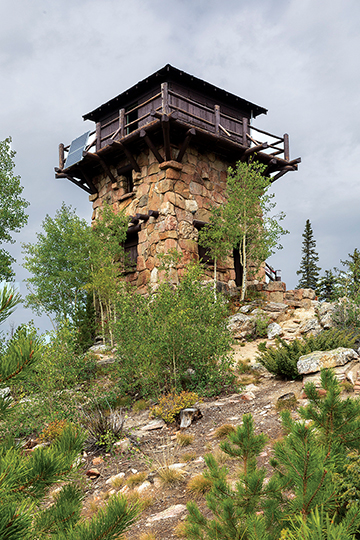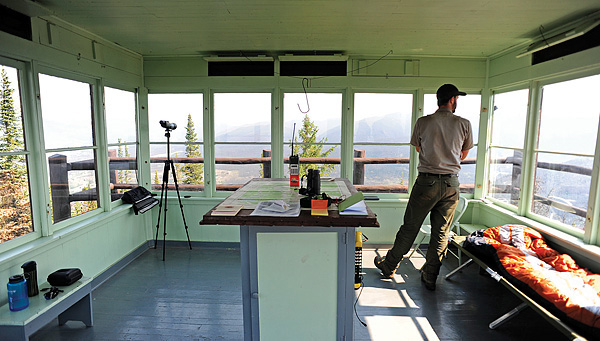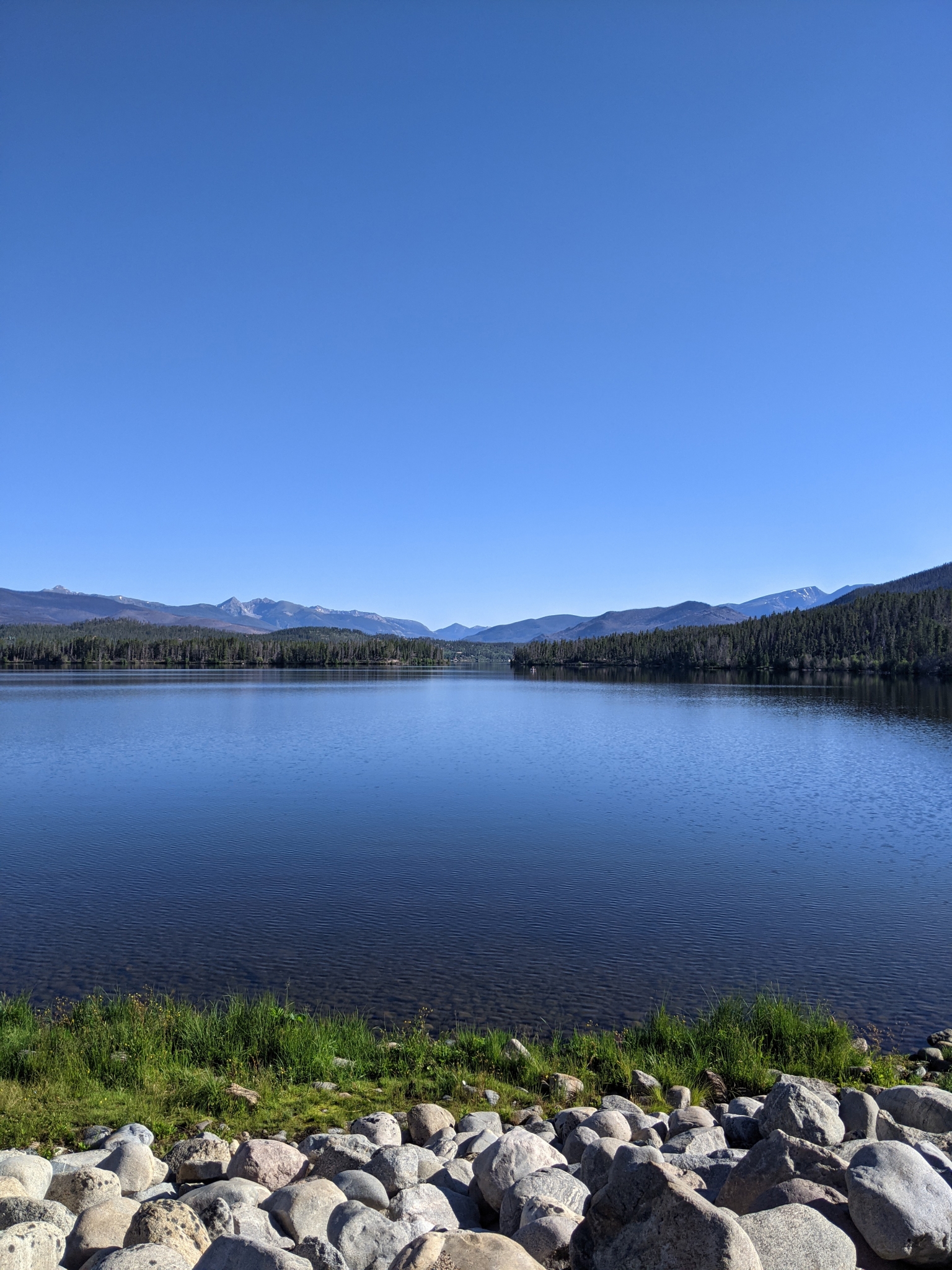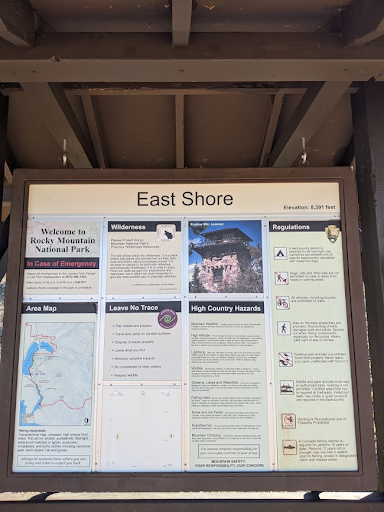
Wildfires and Colorado go together like salt and pepper, and it seems only natural for them to travel together, and to be talked about together. For those living in Estes Park, Grand Lake, and anywhere in northern Colorado or on the Front Range, this rings especially true after the historic East Troublesome and Cameron Peak fires from last summer and fall.
Many residents of Estes Park had to evacuate their homes with only 15 minutes of warning. As climate change and years of extreme fire suppression culminate in these massive fires we are currently seeing, I’m very grateful for our modern fire-spotting technologies, dispatch centers, and the thousands of wildland firefighters across many agencies that spend their summer protecting our resources from fires, often traveling across states and working weeks at a time until the fire is contained.
Fires have long been a part of the ecosystem and experience at Rocky Mountain National Park. Once upon a time, there were four fire lookout towers inside the park, staffed by either one person, or a couple, who would spend their summer living in the tower and watching for smoke with rudimentary instruments known as eyes and binoculars. I’ve always been interested in these towers, as they are essentially glorified government treehouses, yet even as the lookouts spent most of their summer alone reading books, their presence was very significant when a fire was sighted in the area. This experience was romanticized by beat writers like Gary Snyder and Jack Kerouac who spent summers at fire lookouts in Washington State in the 1950s.

One tower still stands in Rocky — the Shadow Mountain Lookout Tower. Built in 1932 by Civilian Conservation Corps workers, this building was regularly used to scout for fires up until 1968. The structure has three stories: the top was for watching for smoke and recording information, the second for accommodation for the person or couple living in the tower, and the bottom floor served as a public contact station for park visitors. The tower was listed on the National Register of Historic Places in 1978, and serves as an example of the rustic architecture style of the National Park Service known as “Parkitecture.” The tower is the only structure of this style in Rocky Mountain National Park, and it reflects its characteristic use of hand labor and the blending of the structures into the naturally beautiful landscape. This historic building was first preserved and restored by funds donated to the Rocky Mountain Conservancy from 1994-1996. Log and stone throughout much of the structure was stabilized and replaced to allow hikers to visit this classic structure, and to partake in the remarkable views of the west side of the park from its base.

One July morning I set out to visit the tower. I rose early and drove across Trail Ridge Road, exiting the park through the Grand Lake Entrance. Parking is accessible at the edge of Shadow Mountain Lake by a slew of Forest Service campgrounds. I began by crossing the Shadow Mountain Dam, a part of the Big Thompson Project which diverts water from the Western Slope to the Front Range of Colorado. Starting from the East Shore Trailhead, the trail quickly enters the park boundary. As I walked alongside the lake, then into the woods, I noticed many downed trees that were all off to the side of the trail. Thank you to the trail crews that worked hard to clear this trail, whoever you are. The trail then crosses the Continental Divide Trail and turns off, making a steep climb into the forest. After the first switchback, the trail climbs up the ridge revealing great views of Shadow Mountain Lake and Grand Lake.
After about two hours and roughly 4.7 miles, I reached the tower. It was even more awe-inspiring in person, and I enjoyed looking at it from all angles. Both the base and the top levels are closed to visitors, but the views of the surrounding lakes and the forest are great from the bottom of the structure. I thought about all who inhabited the tower for more than 30 years, and what they would have been up to on a summer morning like this one. I smelled crisp clean air and not smoke, but knew that this would be changing soon as the summer moved forward. I also thought about the many firefighters who live just down the road from me on the east side of the park, and all the computers and radar systems they use to monitor fires in the area. Behind the tower were several bottles and cans from more than 50 years ago, a testament to the food and other provisions that the lookout and trail crews consumed many years ago. These are technically government property as well as historical artifacts (read: not trash), so please don’t tamper with, or remove them, from where they are.
The structure serves as a historical artifact of the past — both architecturally and systemically. Knowing our current methods of detecting and fighting wildfires, it feels extremely archaic and out of date, yet it was built less than a hundred years ago. In the future, the Conservancy may invest to further repair this historic building, allowing visitors to once again glimpse upon the life of a fire lookout.
There’s even the possibility that the park may staff the building again, like they did in the summer of 2012, when large fires were threatening the gateway communities around the park. During that summer, stationed fire lookouts reported all smoke sightings immediately to the Interagency Dispatch Center in Fort Collins who relayed information to local fire authorities.

With 156 lakes and 118 peaks of 10,000 feet elevation, there’s no shortage of hiking in Rocky Mountain National Park. But there’s only one lookout tower, making the hike to the Shadow Mountain structure a unique experience. The tower reminds us of the past amidst present day wildfire concerns, and also highlights the work the Conservancy has done, and continues to do to preserve and protect this special place. If you’re looking for an excuse to get to the west side of the park I highly recommend visiting the lookout tower.
If you would like to hike to the lookout tower, please follow all Forest Service and National Park rules and regulations, including the timed entry system to RMNP which applies from 9 A.M. – 3 P.M. The Forest Service requires a $5 Day Use Fee or America the Beautiful Interagency pass to park at the Shadow Mountain Dam.
For more information on the Rocky Mountain Conservancy’s support of the park, visit https://rmconservancy.gtstaging.com/our-impact/.
Alex Kay, Conservancy/Sessel Family Education Fellow, 2021
